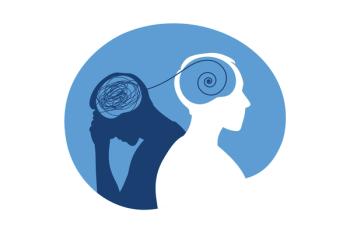
- Psychiatric Times Vol 23 No 7
- Volume 23
- Issue 7
Stress and the Psychiatrist: An Introduction
Defining "stress" and how it is expressed and managed in both psychiatrists and patients is a difficult proposition. This Special Report focuses on stress and the middle ground between the impulse to say there is no such thing as “stress” and the tendency to describe many explicit addressable issues under the monolithic term "stress."
I remember what my ward supervisor once told me about stress when I was a resident in psychiatry. I was presenting a case about a patient who was depressed and complaining about all the stress in her life. At that point, he barked testily, “There's no such thing as stress!” He went on to direct me to be more specific in my interviewing techniques in an effort to identify the concrete problems that my patient was experiencing instead of substituting a sort of shorthand (ie, “lazy”) method of indicating the source of her depression. In his view, the term “stress” was being overused and had become virtually meaningless.
Defining “stress”
But it is also obvious that we can't seem to live without the term “stress,” complain as we may about how sticky it is (we can make it mean almost anything). In a purely everyday, pragmatic sense, we communicate instantaneously about how our day has gone when we complain that it was “stressful.” The Merriam- Webster Collegiate Dictionary (11th edition, 2004) provides several definitions of “stress,” including “a physical, chemical, or emotional factor that causes bodily or mental tension and may be a factor in disease causation” and “a state resulting from a stress; esp: one of bodily or mental tension resulting from factors that tend to alter an existent equilibrium.”
And of course, for the sake of completeness, we must mention Hans Selye, who first coined the modern use of the term. He viewed it as “the rate of wear and tear on the body.”
Stress can be either negative or positive. Some define stress as negative emotions, such as anxiety or anger, or in terms of situations that lead to feeling pressured or tense. Over the past half century, the use of the word “stress” has gradually supplanted more explicit descriptions. The response to stress includes physiologic changes, such as increases in heart rate and muscle tension, and the emotional and behavioral changes that tend to correlate with those body changes. Some symptoms of stress include irritability, defensiveness, snappishness, blaming others, scapegoating, procrastination, diminished productivity, and avoidance of marital and family problems.
Stress among psychiatrists
There is surprisingly little data about stress and psychiatrists. In a systematic review of the literature, Fothergill and colleagues1 observed that psychiatrists are prone to stress, burnout, and suicide. The review was based on the 3-stage model of the stress process:
- The first-level factor posits the existence of external stressors, such as “hassles” or “uplifts.”
- The second-level factors are “moderators,” which are protective against the stressors, eg, high self-esteem, good social support networks, and emotional stability.
- The third-level factors are stress outcomes that can be either negative (burnout, ill health) or positive (high job satisfaction).
The most frequently cited stressors for American psychiatrists were negative characteristics of patients, administrative hassles, resource deficits, and staff conflicts. Long hours and lack of positive feedback were also cited. Younger psychiatrists especially are deeply affected by patient suicides. As measured by the Impact of Event Scale, the posttraumatic stress levels are equivalent to that experienced after a parental death. In the United Kingdom, junior psychiatrists experienced more burnout than older practitioners. There were gender differences as well: female psychiatrists were more stressed about long working hours and ward consultations than their male counterparts.
Moderators were coping mechanisms that most often included seeking support from a partner or colleague, recreation, and holidays. Importantly though, one study found that most psychiatrists seem to keep their problems to themselves, indicating that avoidance coping, as opposed to active coping, could be a part of the problem in maintaining distress in some individuals. In the United Kingdom and Sweden, the most common predictors of a healthy workplace were low levels of emotional exhaustion, positive views about organizational leaders, and active participation in the organization.
The third level of stress outcomes usually gets identified as burnout when the outcome is negative and job satisfaction when it's positive. The most important factors leading toward burnout include lack of administrative support and validation, low pay, responsibility without authority, too much bureaucracy, and personality. Low self-esteem seems to predispose to burnout. A lower sense of accomplishment tends to be associated with working on wards or departments that have difficult patients. Factors contributing to emotional exhaustion include male gender, working 12-hour shifts, and leadership style.
In terms of job satisfaction, it is interesting to note that private practice psychiatrists in the United States report relatively lower levels than expected. Greater job satisfaction tends to be associated with working in organizations that foster feedback, active participation in decisions, and a management style that uses supportive communication practices. Other factors include being affiliated with an academic center or the medical community and being in charge of a center's operations.
Psychiatric illness rates are relatively high, with about 25% of psychiatrists in the United Kingdom having psychiatric morbidity. Psychiatrists have the highest rate of suicidal tendencies among male physicians.
Another prism to use in the consideration of stress in psychiatry has been suggested by Menninger.2 There is a tendency to view most stressors as external, as suggested by the foregoing discussion. External factors may include:
- Lack of control.
- Unpredictability.
- Intense responsibility.
- Change.
The internal response to the perceived external threat may be just as important. Internal responses to these external factors may be colored by the psychiatrist's expectations about his or her ability and commitment to care for others. “Compassion fatigue” (compare with “battle fatigue” in war combatants) refers to the stressor that can affect clinicians who care for victims of severe trauma, most recently the veterans of the wars in Iraq and Afghanistan. Not only do professionals absorb information about the suffering but they may absorb the suffering as well. Empathy can be a double-edged sword.
Smith3 described doctors as an unhappy group in an editorial in the British Medical Journal 5 years ago. He clearly describes the cause of their unhappiness as stress related, citing overwork and inadequate support. Part of his solution was to rewrite what he called the “bogus contracts” between doctors and patients. These are composed of hidden assumptions of patients, including that modern medicine can solve many of one's problems and that doctors know everything that is necessary to know. Among the hidden assumptions of physicians are that modern medicine has limited powers and that while they don't know everything, they do know how difficult many problems are. Smith proposed a new contract acknowledging that “death, sickness, and pain are part of life” and that doctors don't know everything and need “psychological support.”
Psychiatrists tend to self-select for the helping profession, and they may be perfectionistic, impatient, and demanding workaholics. They may often need to have a sense of control of their own emotional life as well as that of other people. Here the threat of patient suicide or violence provokes the greatest anxiety.
Women psychiatrists have an additional stressor in that society places an additional set of gender- and role-specific expectations on them-that of taking care of their families. They report more difficulty in being listened to, understood, and even believed in a maledominated environment (although this may be changing, since the numbers of women vs men psychiatrists are gradually changing, with women outnumbering men, especially in the mid-30s to mid-40s age group).
Being specific about what we mean by “stress” in the workplace for psychiatrists demonstrates just how complex the phenomenon really is. The stressor and the stressed combine in a relationship. The outcome is determined by multiple aspects, but probably most importantly by how the clinician defines himself and the stressful situation.
Managing stress in psychiatrists
There is a wealth of information about how psychiatrists can help patients manage stress. Fothergill and colleagues1 could find no articles that evaluated the effectiveness of specific stress management techniques for mental health professionals; however, many mental health workers find relaxation training helpful. Organizational problem solving and staff support groups are other strategies. Emotional self-management strategies have been studied and found to result in a 23% reduction in cortisol levels and an increase in the coherence of heart rate variability patterns.4
Some combination of mastery and distancing techniques is often used to cope with stress. Mastery implies use (or overuse) of our usual methods of getting control of problematic situations. Distancing can mean escape or an outlet, including meditation or sports. Studies of posttraumatic stress disorder, bereavement, and child abuse repeatedly demonstrate the importance of having a competent social support network.2
The devastating impact on clinicians of a patient's suicide argues for a concentrated effort to develop empirically validated methods of suicide risk assessment and specific organizational strategies for supporting professionals trying to cope with this difficult situation.1 To the extent that stress in the profession is a function of how and by whom the goals of the organizations that psychiatrists work in are defined, it may be helpful to reappraise the meaning of leadership. As noted above, many psychiatrists cite organizational constraints as being the source of stress for them. These problems may be addressable by adopting a different way of looking at leadership. Covey,5-7 a best-selling author and management mentor, suggests looking at the leadership role as a choice rather than as a position. He identifies overwork and underappreciation as major causes of stress and cites the tendency of many organizations, including the health care industry, to try to address this with “quick-fix, morale boosting, attitude-adjusting programmes that are as effective as candy floss-sweet at first taste, but quickly vanishing.” This will remind many clinicians of the periodic Continuing Medical Education conferences, where the stress management seminar is typically a PowerPoint-driven pep talk sandwiched between the workshop on the bipolar disorder treatment update and the pharmaceutical industry–sponsored luncheon.5-8
Covey disparages the “Great Jackass” theory of management, in which the carrot-and-stick style of leadership dominates. Adopting a principle-centered leadership paradigm entails a commitment to change at the individual level, working from the inside out. This means building self-awareness, identifying one's own vitally important goals, and creating a balance that includes a devotion to living, loving, learning, and leaving a legacy. In turn, this might lead to identifying a personal mission and a vision for an organization that empowers others to find their own motivation to service. Many of the problems that Covey finds in big business exist in the mental health care sector-low trust, low productivity, and environments in which the cultures of blame and victimization, political gamesmanship, and apathy spread. These are often the issues that get subsumed under the name of “stress” in academic departments, community mental health centers, and private practice groups.
So, as we enjoy and learn from the articles in this issue's Special Report on stress, let's try to find the middle ground between the impulse to say there is no such thing as “stress” (like my ward supervisor) and the tendency to describe many explicit addressable issues under the monolithic term “stress.”
Dr Amos is clinical associate professor in the department of psychiatry at the University of Iowa Hospitals and Clinics in Iowa City, Iowa. He reports that he has no conflicts regarding the subject matter of this article.
References:
References
1. Fothergill A, Edwards D, Burnard P. Stress, burnout, coping and stress management in psychiatrists: findings from a systematic review. Int J Soc Psychiatry. 2004;50:54-65.
2. Menninger WW. Practitioner, heal thyself: coping with stress in clinical practice. Bull Menninger Clin. 1996;60:197-205.
3. Smith S. Why are doctors so unhappy? Medical profession must unite to address problems. BMJ. 2001;322:1363.
4. McCraty R, Barrios-Choplin B, Rozman D, et al. The impact of a new emotional self-management program on stress, emotions, heart rate variability, DHEA and cortisol. Integr Physiol Behav Sci. 1998;33:151-170.
5. Covey SR. The 7 Habits of Highly Effective People: Powerful Lessons in Personal Change. New York: A Fireside Book: Simon and Schuster, Inc; 1990.
6. Covey SR. The 8th Habit: From Effectiveness to Greatness. New York: Free Press: A Division of Simon and Schuster; 2004.
7. Covey SR. Investing in people. Nurs Stand. 2003;17:58-59.
8. Thomsen S, Soares J, Nolan P, et al. Feelings of professional fulfilment and exhaustion in mental health personnel: the importance of organisational and individual factors. Psychother Psychosom. 1999;68:157-164.
Articles in this issue
over 19 years ago
The ABCs of Cognitive-Behavioral Therapy for Schizophreniaover 19 years ago
Treating Paul Celan Poemover 19 years ago
Cognitive Decline in Elderly Predicted by Brain Imagingover 19 years ago
Happy Endingsover 19 years ago
“My Madness Saved Me”: The Madness and Marriage of Virginia Woolfover 19 years ago
Eating Disorders in Schizophreniaover 19 years ago
BasicNeeds: Helping the Mentally Ill Live ProductivelyNewsletter
Receive trusted psychiatric news, expert analysis, and clinical insights — subscribe today to support your practice and your patients.













